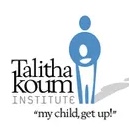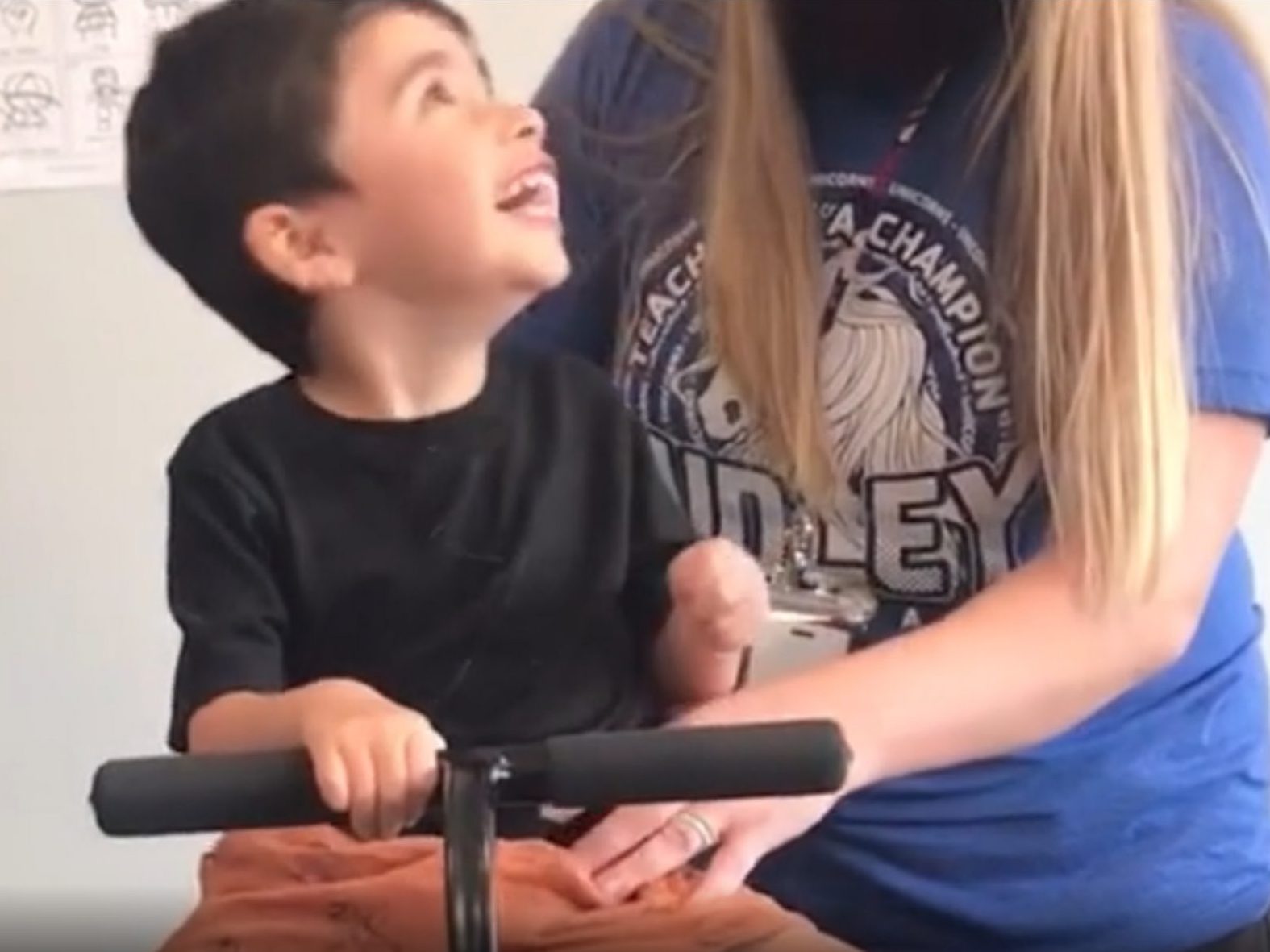Horseback Riding Therapy benefits Autism Spectrum Disorders
The MiraColt™ : Therapeutic benefits for Autism
The MiraColt™ uniquely mimics the multidimensional, rhythmic, repetitive walking gait motion of a horse. This motion provides sensory-motor stimulation that has therapeutic benefit when applied to improve sensory processing, physical skills (balance, gait stability & stride length), self-confidence, and learning in children along the Autism spectrum.
The MiraColt™ Makes a Difference
”Because we have 16 years of experience with trauma-affected children, we are able to segment the results of one type of intervention such as Chariot [The MiraColt], particularly when what we are seeing is dramatic as well as long-lasting. Our Nurture Center Director, Donna Losak, has said that Chariot [the MiraColt] is a singularly critical piece of equipment that brings to the proprioceptive and vestibular sensory systems a type of input we would not be able to offer otherwise.”
— Susan Cowley, Founder, Talitha Koum Institute in Waco, Texas (April 2019)
Horseback Riding, Hippotherapy & Autism : Is there a benefit?
Scientific research has shown that horseback riding therapy can be beneficial for individuals with Autism spectrum Disorders (ASD) in several ways. Therapeutic use of horseback riding helps improve balance, coordination, muscle tone, and overall physical fitness. It can also provide sensory input that helps individuals regulate their sensory systems and improve sensory processing. The repeated, rhythmic nature of the horse gait motion is important in equilibrating the often times “noisy” or cyclical internal sensory-cognitive multiverse that individuals with Autism can experience. Studies have shown a reduction in the severity of ASD symptoms, including hyperactivity, following prolonged participation in therapy interventions involving horse riding.
What’s more, recent research suggests even greater breakthroughs when riding therapy is combined with additional brain-building activities. It was observed that this approach correlated with an improvement in coordination and dexterity. Researchers and behavioral scientists continue to find evidence that therapy interventions that capture the benefits of the walking gait motion of a horse as occurs in horseback riding therapy of hippotherapy has a significant impact on symptoms observed in those with autism.
The MiraColt™ Equine Motion Simulator is being used, in both a home and therapy or clinical setting, as a therapeutic tool for individuals with an autism spectrum disorder (ASD). The simulators is designed to mimic the motion of horseback riding and provide a safe and controlled environment for individuals to experience the benefits of horseback riding.
The MiraColt™ provides a similar sensory experience to traditional horseback riding therapy, but in a more controlled environment. The simulator can be adjusted to provide varying degrees of movement and sensory input, depending on the individual’s needs and abilities. It can also be used to introduce individuals to horseback riding in a safe and supportive way, allowing them to become more comfortable with the experience before transitioning to traditional horseback riding therapy where through bonding and grooming, they can benefit from the additional animal-human benefits of riding.
How the MiraColt Works
The MiraColt, inspired by the benefits realized by using horses in hippotherapy for autism, reproduces the complex and natural three-dimensional motion patterns experienced when walking or riding a horse.
The MiraColt, by simulating this motion, provides carefully graded motor and sensory inputs that engage sensory and cognitive systems. These inputs stimulate improvements in thought, behavior, relational, and task processing, as well as functional outcomes.
What Is Autism and how we help?
Autism, also known as Autism Spectrum Disorder (ASD), is a neurodevelopmental disorder that affects communication, thought processing, social interaction, and behavior (certain restricted repetitive behaviors, activities, and interests) . It is a lifelong condition that usually becomes apparent in early childhood. The incidence of autism varies depending on the study and the criteria used for diagnosis, but it is estimated to affect approximately 1 in 54 children in the United States, according to the Centers for Disease Control and Prevention (CDC).
The signs and symptoms of autism can vary widely, but some common features include:
- Social communication difficulties: Children with autism may have trouble understanding and using nonverbal cues such as eye contact, facial expressions, and body language. They may also have difficulty with verbal communication, such as using language in a socially appropriate way, initiating or maintaining conversations, and understanding jokes or sarcasm.
- Repetitive behaviors and routines: Many children with autism engage in repetitive behaviors, such as rocking, spinning, or flapping their hands. They may also have strict routines and rituals that they need to follow, and may become upset if their routine is disrupted.
- Sensory sensitivities: Children with autism may be overly sensitive to certain sensory inputs, such as light, sound, touch, or taste. They may also be under-responsive to sensory inputs, such as pain.
- Difficulty with social interactions: Children with autism may struggle to form relationships with peers and adults, and may prefer to play alone. They may also have difficulty understanding social norms and rules, and may behave in ways that are seen as socially inappropriate.
- Unusual interests: Many children with autism have intense interests in particular topics or activities, and may spend a lot of time talking about or engaging in these interests.
It is important to note that every person with autism is unique and may present with different combinations of these features. Additionally, some individuals with autism may have other associated conditions, such as intellectual disability, ADHD, anxiety, or depression.
Signs of autism can be seen in children as early as 18 months, but usually appear by age 2 or 3. It affects boys 3-4x more than girls, with girls typically expressing less obvious ASD signals than boys. Research suggests that early intervention for people with autism leads to better outcomes later in life and significantly limits the symptomatic impacts of the disease on both the affected child and their care giving family.
The MiraColt™, as a horse riding simulator device, is an effective tool in the intervention for people with autism. The device, used as a complement in assisted behavior and speech therapy for individuals with autism, has benefits in terms of improved social and motor skills, as well as reduced irritability and hyperactivity.
The MiraColt’s versatility allows it to help meet the needs of individuals with autism, wherever they are. It not only serves as an enhancement to therapeutic practices in clinics, but also allows families to utilize the device in the privacy of their own home. Rather than serving as a replacement to traditional therapy, the MiraColt™ seeks to amplify ABA (Applied Behavior Analysis), physical, speech, and cognitive behavioral therapy to improve the quality of life for individuals with autism.
The MiraColt also serves as a teaching aid for kids, where cognitive improvements are directly transferable to the classroom setting. Studies show that these benefits result in improved educational development and social interactivity for individuals with autism. They have also been shown to reduce care-related stress for their families and granted them greater freedom.
The MiraColt offers significant benefits and solves accessibility challenges for people who cannot get to a horse.
The MiraColt™ Is Changing Lives
Equine-assisted therapy for autism isn’t always a practical solution for those who need it most. There may be a lack of horseback riding facilities in a given region—plus, bad weather can reduce these opportunities even more. The MiraColt is a mechanical solution that accurately mimics horse movement, so children and adolescents with autism can still experience the benefits of hippotherapy without riding an actual horse.
The MiraColt is safe and affordable. It’s a life-changing addition to any household or clinic. At Chariot Innovations, we strive to make movement therapy accessible to everyone, and we’ve invested substantial time and resources into making this equipment the most effective of its kind. Unlike other simulators, the MiraColt achieves a realistic 3D walking motion. It provides an organic experience that more closely aligns with an authentic horse gait.

